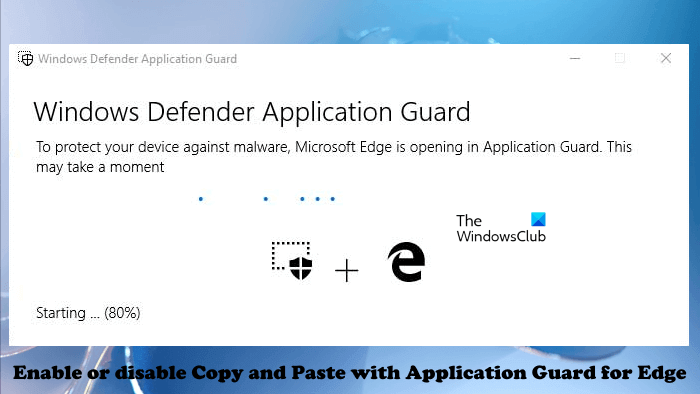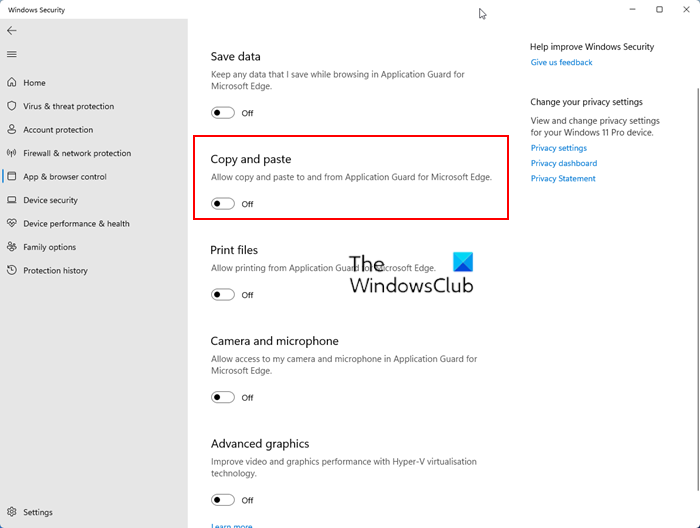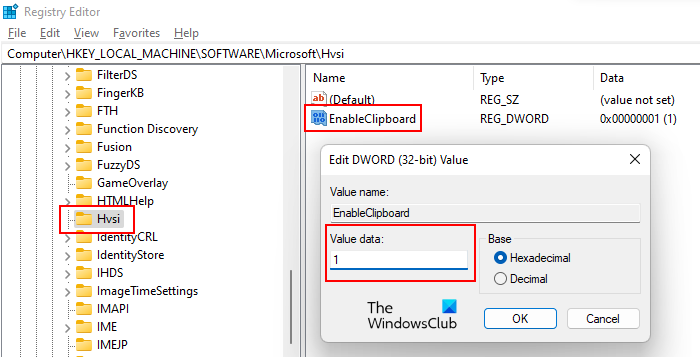This article shows how to enable or disable Copy and Paste with Application Guard in Edge. Microsoft Defender Application Guard helps users protect their computer systems from cyber attacks. This feature is available in the enterprise edition of the Windows operating system. The aim of developing this technology is to protect computer systems in an organization from virus and malware attacks. It launches Microsoft Edge in an isolated Hyper-V-enabled container. Hence, some features like copy and paste remain disabled until you enable it for Application Guard for Edge.

How to enable or disable Copy and Paste with Application Guard for Edge
While working in an organization, employees may visit untrusted websites. Untrusted websites are a serious threat to an organization because visiting such websites can install malware on a computer system. Microsoft Defender Application Guard opens such untrusted or unsafe websites in an isolated virtual environment that eliminates the risk of virus or malware attacks. To use this technology, Hyper-V should be enabled on your system. You can install Microsoft Defender Application Guard via Windows Optional Features. Suppose you want to copy and paste data while using Edge in an isolated virtual environment. In that case, this article will show you how to enable or disable Copy and Paste with Application Guard for Edge.
You can enable and disable this feature via:
- Settings
- Registry Editor
We have covered both of these methods below:
1] Enable Copy and Paste with Application Guard for Edge via Settings

You need to sign in to your Windows computer with your administrator account. Follow the steps provided below:
- Click on Windows Search and type Windows Security.
- Select Windows Security from the search results.
- Select App & browser control.
- Click on the Change Application Guard settings link under the Isolated browsing section.
- Turn on the Copy and paste switch.
If you want to disable this feature, turn off the Copy and Paste switch.
2] Enable or disable Copy and Paste with Application Guard for Edge via Registry Editor
This method requires a modification in Windows Registry. Hence, before you proceed, we recommend you create a System Restore Point and back up your Registry. Creating a restore point will help you go back to the previous working state if any problem occurs on your system.
Follow the instructions written below carefully.
Press the Win + R keys to open the Run command box. Type regedit in the Run command box and click OK. You will receive a UAC prompt. Click Yes.
Once the Registry Editor opens up, copy the following path and paste it into the address bar of the Registry Editor. Hit Enter.
HKEY_LOCAL_MACHINE\SOFTWARE\Microsoft

Now, expand the Microsoft key by double-clicking on it. Now, look for the Hvsi sub-key. If the sub-key is not available, you have to create it. To do so, right-click on the Microsoft key and go to “New > Key.” Name the newly created key Hvsi. Now, select the Hvsi key. There should be a value named EnableClipboard on the right side. If not, create it manually. To do so, right-click in the empty space on the right side and go to “New > DWORD (32-bit) Value.” Name this newly created value EnableClipboard.
Now, double-click on the EnableClipboard value and type 1 in its Value data. Click OK to save the changes. Close the Registry Editor and restart your computer.
If you want to disable this feature again, change the Value data from 1 to 0 and restart your computer.
Also read:
- How to enable Print from Application Guard for Edge
- How to enable Advanced Graphics in Application Guard for Edge
How do I know if Application Guard is enabled?
To know if Application Guard is enabled on your system or not, open Windows Features via the Control Panel and look for Microsoft Defender Application Guard. If there is a tick in the checkbox, the Application Guard is enabled on your system, otherwise, it is disabled.
I hope this helps.
Read next: Enable Camera and Microphone in Microsoft Defender Application Guard for Edge.
Leave a Reply